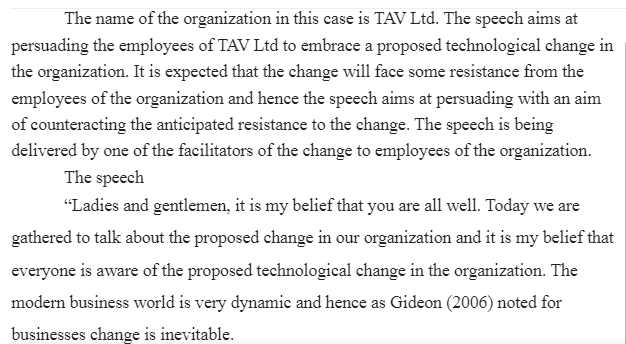The Power of Persuasion-Persuasion, Minimum Wage, and HR Law
Assignment Overview
The Power of Persuasion
Those who are able to persuade have an innate power that can assist them throughout their career. According to Cogner (1998):
The concept of persuasion, like that of power, often confuses and even mystifies business people. It is so complex—and so dangerous when mishandled—that many would rather just avoid it altogether. But like power, persuasion can be a force for enormous good in an organization. It can pull people together, move ideas forward, galvanize change, and forge constructive solutions. To do all that, however, people must understand persuasion for what it is—not convincing and selling but learning and negotiating. Furthermore, it must be seen as an art form that requires commitment and practice, especially as today’s business contingencies make persuasion more necessary than ever (p. 95).
At times, HR managers and professionals will need to use their persuasion skills when dealing with employees and organizational issues. As a practical example, when dealing with an organizational change, there will be many employees who will resist and oppose the change. As such, HR managers and professionals could use their persuasion skills to help employees understand the benefits of the organizational change. Therefore, there are four main steps to persuade:
| 1 | Establish
Credibility |
The first hurdle persuaders must overcome is their own credibility. In the workplace, credibility grows out of two sources: expertise and relationships. People are considered to have high levels of expertise if they have a history of sound judgment or have proven themselves knowledgeable and well informed about their proposals. |
| 2 | Frame the Common Ground | Even if your credibility is high, your position must still appeal strongly to the people you are trying to persuade. After all, few people will jump on board a train that will bring them to ruin or even mild discomfort. Effective persuaders must be adept at describing their positions in terms that illuminate their advantages. |
| 3 | Provide Evidence | With credibility established and a common frame identified, persuasion becomes a matter of presenting evidence. Ordinary evidence, however, won’t do. We have found that the most effective persuaders use language in a particular way. They supplement numerical data with examples, stories, metaphors, and analogies to make their positions come alive. That use of language paints a vivid word picture and, in doing so, lends a compelling and tangible quality to the persuader’s point of view. |
| 4 | Connect Emotionally | Good persuaders are aware of the primacy of emotions and are responsive to them. Perhaps more important, however, is that effective persuaders have a strong and accurate sense of their audience’s emotional state, and they adjust the tone of their arguments accordingly. |
*** Cogner, J.A. (1998). The Necessary Art of Persuasion. Harvard Business Review, May-June Issue.
Case Assignment
Drawing on the material in the background readings and doing additional research, please prepare a 2- to 4-page paper (not including the cover and reference pages) in which you:
- Write a speech for persuading employees to embrace a technological change at your organization. You will use the four steps mentioned above.
Assignment Expectations
Your paper will be evaluated on the following points:
- Precision: Does the paper address the question(s) or task(s)?
- Clarity: Is the writing clear and are the concepts articulated properly? Are paraphrasing and synthesis of concepts the primary means of response to the questions, or are excessive use of quotations how thoughts are conveyed? Are headings included in all papers greater than 2 pages?
- Breadth: Is the full breadth of the subject addressed?
- Depth: Does the paper address the topic in sufficient depth?
- Grammar, spelling and vocabulary: Is the paper well written? Are the grammar, spelling, and vocabulary suitable to graduate-level work?
- Referencing (citations and references): Does the paper use citations and quotation marks when appropriate?
- Critical thinking: Is the subject thought about critically, (i.e., accurately, logically, relevantly, and precisely)?
Answer Preview-The Power of Persuasion-MGT 412

